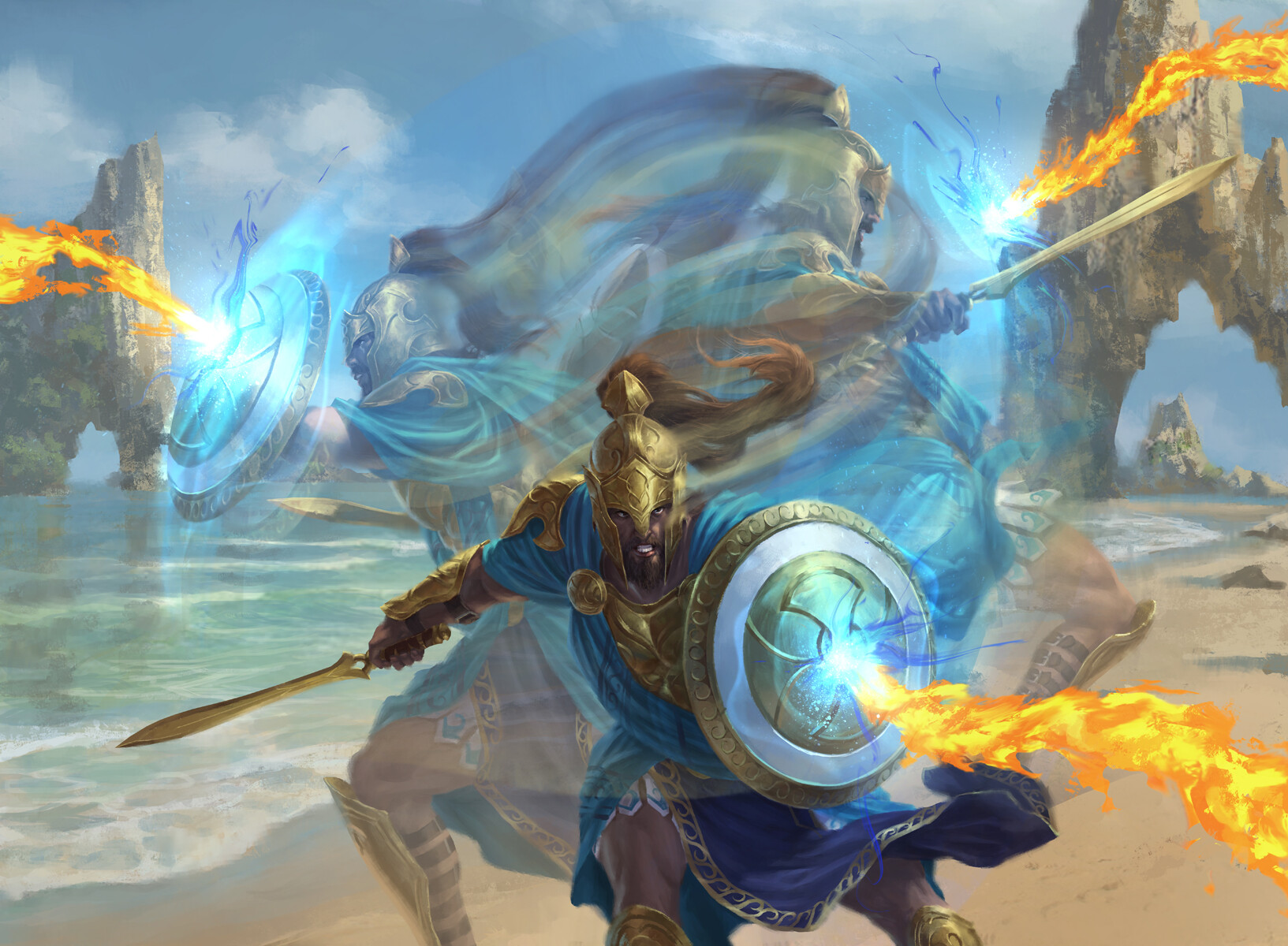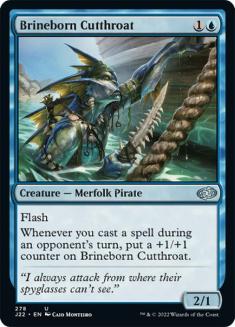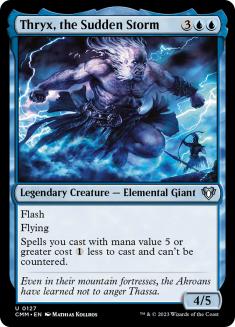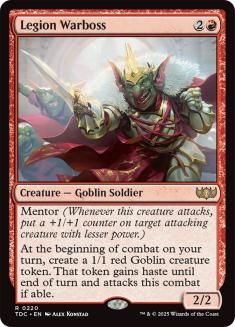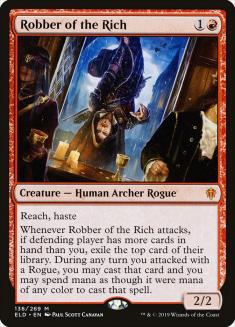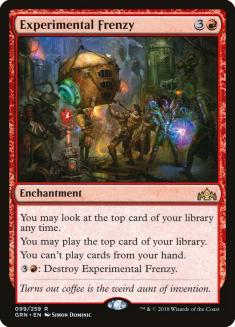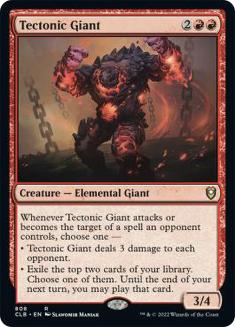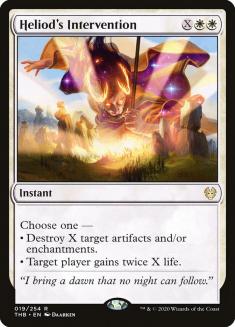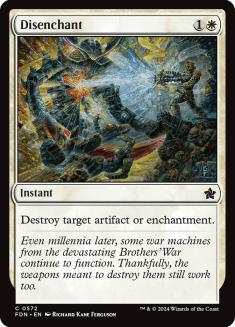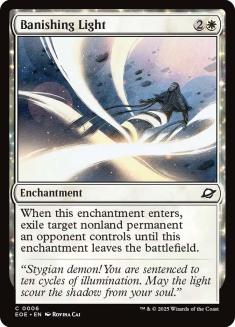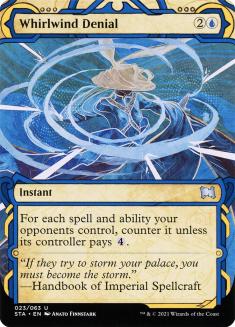I am ready to declare this Standard format “ripened.” The best decks have set the terms of engagement, and while there is still a possibility of a new deck popping up on any given week, that deck will have to check some very specific boxes in order to compete. Recognizing the overpowered archetypes like Azorius Control would have carried you to success very nicely up until this point. Now, however, the secret is out, and the free wins you were granted by your opponents playing subpar decks have all but dried up. So how do we reclaim our edge?
The answer is sideboarding. Throughout my Magic career, I’ve masked some pretty glaring technical deficiencies by doing three things well: deckbuilding, deck selection, and sideboarding. The largest delta between me and my opponents is in sideboarding, where, even at the semi-pro level, people are predisposed to choosing cards rather than building plans. Let’s talk about why some presently played options are deficient and identify some replacements that better align with their deck’s gameplan.
Tired:
Wired:
In general, I’m receptive to “easy buttons” when it comes to sideboard plans. There is no shame in having a shift that an unprepared opponent won’t or can’t account for. I think that is the goal of Brineborn Cutthroat, which is starting to work its way into Azorius Control decks. You bring it in in the mirror, cast a couple of spells on your opponent’s turn, and end the game without getting bogged down in twenty turns of draw-go. However, I see some major problems with Brineborn Cutthroat in this context.
As the optimal mirror strategy is often draw-go, it is rare your opponent will choose to interact with you on their turn after Turn 2, leaving you with few options that can actually grow your Brineborn Cutthroats out of range of being blocked by The Birth of Meletis‘s 0/4 Wall token. Should you manage to effectively grow your Cutthroat, a resolved Teferi, Time Raveler will quickly send you back to square one. Alternatively, it can just get bricked by Archon of Sun’s Grace or Castle Ardenvale tokens. Sideboard plans in the mirror often keep in some number of sweepers to account for Dream Trawler, so the idea of just casting a Brineborn Cutthroat and laughing your way to victory seems unlikely.
The more problematic issue is that Brineborn Cutthroat doesn’t force action. With a high enough life total, it can and will be ignored for many turns. And now, the resources you’ve invested into Brineborn Cutthroat will be absent when your opponent is ready to fight over a card that can legitimately end the game.
Thryx, the Sudden Storm is an easy button I can get behind. First, it will end the game in short order if for some reason your opponent is caught without a response. More importantly, Thryx can be used to dictate your opponent’s play because if they fail to respond, you have effectively taken options away from them. It pressures your opponent in the same way that Teferi does — by letting you dictate terms of engagement. It ignores all the chump-blocking tokens and effectively answers opposing planeswalkers, while providing another potential target for an Elspeth Conquers Death reanimation. Commence the Endgame was a better option when the field was smaller, but with some new decks to account for in the form of Temur Adventures and Bant Midrange, I’m giving Thyrx a look for the time being.
Tired:
Wired:
Temur Reclamation has waffled on alternate threats, but in the spirit of the moment, it’s time to commit to taking back from the rich. The argument for a Legion Warboss as your secondary threat hinged greatly on the value of the body left behind. A 1/1 proved useful for pressuring Teferi and Narset while putting an opponent in range of ever-smaller Explosions. When Azorius Control was focused on Dream Trawler as its sole win condition, this logic checked out. However, the proliferation of Archon of Sun’s Grace and the correct conclusion that it deserves a spot against Temur Reclamation has me all-in on Robber of the Rich.
Robber of the Rich leaves behind something far more impactful than a 1/1 in the form of Azorius spells that were truly backbreaking in the matchup. If you think Temur Reclamation is a good deck in its present incarnation, you should see it when it adds Teferi and Dovin’s Veto. All of this comes with an entirely acceptable clock which arrives at a time when you can be comfortable tapping mana. I also think you can be begrudgingly happy with the card against some aggressive opponents, which I can’t say about Legion Warboss.
When it comes to Jeskai Fires, my opinion on the right alternate threat is probably irrelevant. I’ve been convinced since the deck’s inception that it does not deserve a place in the top tier, but continued success has proven me wrong at this point. Since there’s something I’m clearly missing, I’ll encourage you to defer to experienced Jeskai Fires pilots. All I’ll say is that Tithe Taker is the card that I’ve found hardest to play against as an Azorius Control pilot, and Legion Warboss has felt like the least impactful of their potential threats.
Tired:
Wired:
Experimental Frenzy has never quite fit into the latest versions of Mono-Red Aggro. The average converted mana cost of the deck has simply gotten too high. Even in mirror matches, I didn’t love the idea of maxing removal and becoming an Experimental Frenzy-based control deck. Individual cards are just too powerful in this format, and Experimental Frenzy in the absence of a bevy of one-mana spells often just felt like an inconsistent Phyrexian Arena. Whereas an Experimental Frenzy that survived a turn almost always ended the game, the card now demands two or three turns before it snowballs its advantage.
If that’s the case, why don’t we just play a card that can kill our opponent in that same time frame? Tectonic Giant is a more realistic way to face the mirror that doesn’t just nerf your capacity for aggression and is a meaningful standalone threat against deck like Temur Reclamation or Azorius Control that prevents you from effectively employing parasitic threats like Torbran, Thane of Red Fell or Runaway Steam-Kin. I don’t think I would play a full four copies, but some additional staying power combined with reach feels like a necessity now that deckbuilding is again accounting for Mono-Red.
Tired:
Wired:
Gerry Thompson and I went to war a couple of weeks ago in the Temur Reclamation VS Azorius Control matchup, and it became abundantly clear that every single point of mana expenditure could be game-ending. That need for mana efficiency exists across multiple matchups in Theros Beyond Death Standard now. With the rise of Jeskai Fires and Temur Adventures over the past few weeks, I expect that people will be returning to artifact and enchantment removal to answer the namesake cards from those decks. I also expect that the first call will go out to the Heliod’s Interventions that were popular at the start of this format. We can do better.
Has anyone cast Heliod’s Intervention to gain life? Did you manage to win the game from that point? I know I haven’t. If you ignore that part of the card, then the only upgrade is taking out multiple enchantments or artifacts at once. While this ability might occasionally pick off an Anax and an Embercleave, a careful opponent will play around this potential blowout. When it comes to Temur Adventures and Jeskai Fires, it only takes a singular copy of the namesake cards to accrue a massive advantage. They are ostensibly cards which you must kill on sight. In that situation, mana efficiency is everything. You need to ignore blowout potential and consider the gameplay patterns that can push you towards winning a game of Magic. Multi-spell turns in response to an opponent’s key threats are huge and are how you can reclaim the initiative. Each mana matters when attempting to achieve this goal.
Tired:
Wired:
These cards seem incongruent, but both spells are about managing your opponent’s threats. Banishing Light has increased vulnerabilities at a moment when awareness of artifacts and enchantments is at a high-water mark. It also is not thrilled to see another Brazen Borrower deck enter the metagame. Despite this fact, Banishing Light has a clear timing benefit in that it can answer the cards already on the battlefield. Unfortunately, that benefit has never been less meaningful.
Theros Beyond Death Standard is about cascading advantages. Once a non-setup card has entered the battlefield, it is rare that you can answer it on a one-for-one basis at sorcery speed and feel good about the exchange. Give your opponent a turn with Wilderness Reclamation on the battlefield and it’s staying there. Leave Fires of Invention around and you’ve got an angry pony breathing flame. Let a Lucky Clover player do their thing for a turn and you’re completely buried.
Whirlwind Denial represent a concession to this fact that still allows you some limited, but meaningful interactions with resolved threats. Clean out a Lucky Clover fueled stack, answer the entirety of that Hydroid Krasis, stop a crucial Blast Zone activation, prevent an Embercleave for equipping for a turn — the plays present themselves, and you’ve crucially picked up another counterspell that can stop the snowball from rolling downhill.
Tired: Sideboarding in Cards for Specific Matchups
Wired: Getting Your Sideboard Cards Whenever You Want
Creatures (24)
- 4 Lovestruck Beast
- 4 Beanstalk Giant
- 4 Edgewall Innkeeper
- 4 Bonecrusher Giant
- 4 Fae of Wishes
- 4 Brazen Borrower
Lands (27)
Spells (9)

Aaron Gertler singlehandedly reconfigured Theros Beyond Death Standard in the course of a single tournament, and he did so by showcasing the power of meticulous sideboard construction. Fling. Once and Future. Shadowspear. Do you think you can come upon these choices by accident? Aaron has been very quietly dominating the Arena ladder for months with this archetype, and his card choices are those of someone who is playing towards specific plans in every matchup.
While this isn’t Aaron’s first instance of success (he deserves a lion’s share of the credit for popularizing Simic Mass Manipulation in 2019), I would not be surprised if this is the result that solidifies his place among the top tier of deckbuilders. The lessons he has learned through optimizing the Temur Adventures sideboard will shine through in every deck he builds going forward.
As far as this deck’s place in Theros Beyond Death Standard, it’s going to take the average player a long time to catch up to Aaron’s level of mastery. I have no doubt that once you’ve put in the work, you will be rewarded by Temur Adventures. It has the tools to go bigger than every deck in the format while simultaneously presenting reasonable early defenses, midrange threats, and combo kills out of nowhere. There aren’t many decks throughout Magic’s history that can stake an honest claim to that kind of versatility. The first three that come to mind: Twin Blade in Standard, Splinter Twin in Modern, and Dimir Inverter in Pioneer.
Pretty good company, don’t you think?

